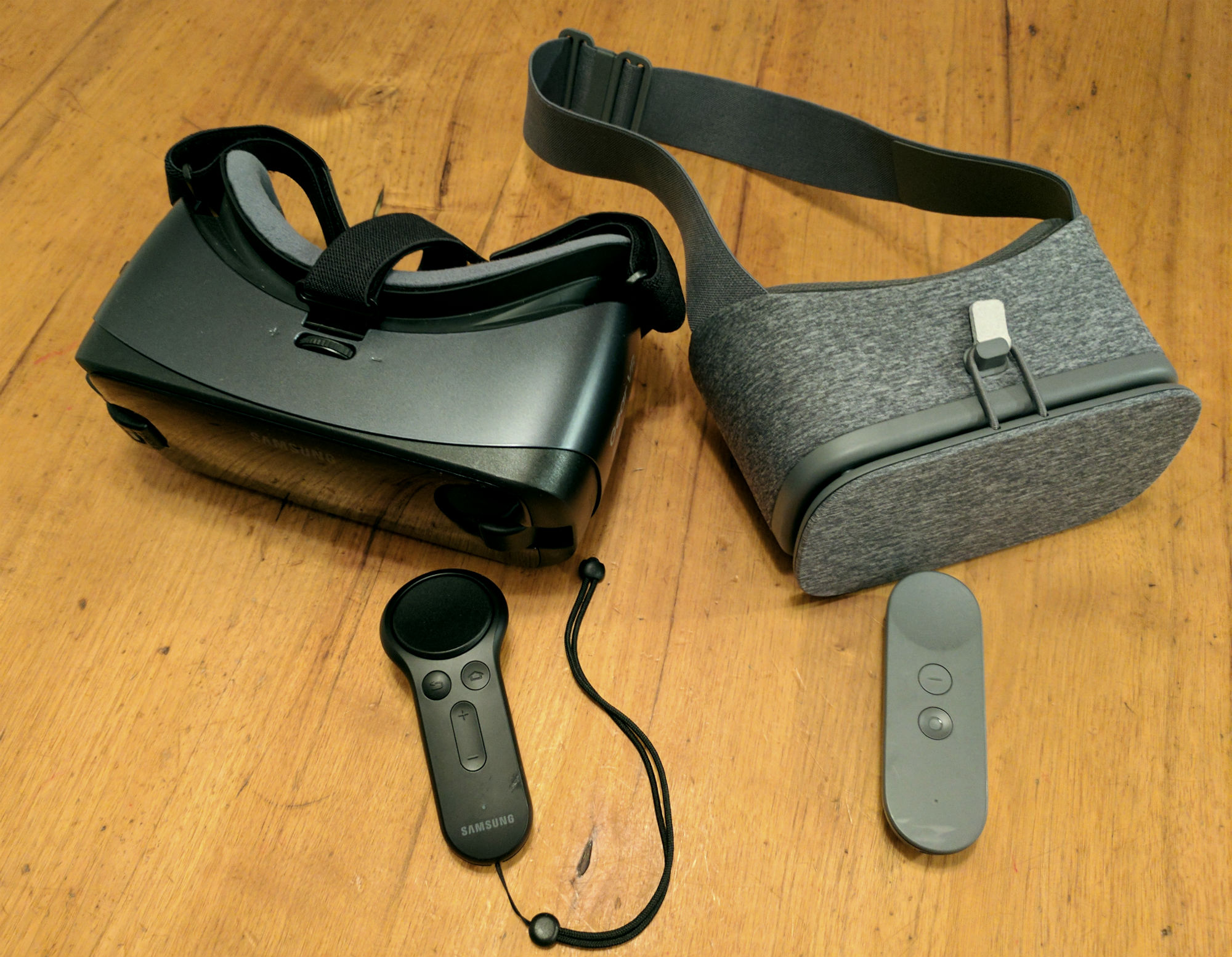Samsung Gear VR (2017): Controlling Reality

With the release of the Galaxy S8 righting Samsung’s rocky mobile ship after last year’s debacle, it’s also time for another Gear VR to go with that shiny new phone. This year’s Gear VR adds a long awaited addition—a VR-specific motion controller. Similar to Google’s Daydream controller, but shinier and more ergonomic, this makes interacting with the overall Oculus interface feel more natural.
The new controller is compatible back to the Galaxy S6, but there’s a noticeable increase in overall VR performance with the Galaxy S8 thanks to its impressive horsepower. The headset itself seems identical to last year’s model though, which featured a wider angle of vision and a back button. And of course, the new model fits both the Galaxy S8 and S8+ (which is what we used to test it).
If you’re onboard the Samsung Gear VR train already, you can instead shell out $40 for just the controller and still get the same VR experience. However, how the controller actually changes that experience can be hit and miss. Developers have to add support to older apps and thus far, adoption has been slow and steady.
Targeting games (such as Drop Dead) are immensely improved by the controller—where you can use it essentially as a precise gun to mow down virtual bad guys instead of relying on head tracking and the headset’s side touch pad. Netflix, on the other hand, still doesn’t support the controller at all, still relying on either head movements or the side touchpad of the headset.

-

-

-

-

- Curated Home Page Articles By Test Admin October 21, 2025 | 3:10pm
-

- Curated Home Page Articles By Test Admin October 21, 2025 | 2:57pm
- Urls By Test Admin October 21, 2025 | 2:57pm
- Curated Home Page Articles By Test Admin October 21, 2025 | 2:55pm
-

-

-

-

-

-

-

-

-

-

-

-

-

-

-

-

-

-

-

-

-

-

-

-

-

-

-

-

-

-

-





































